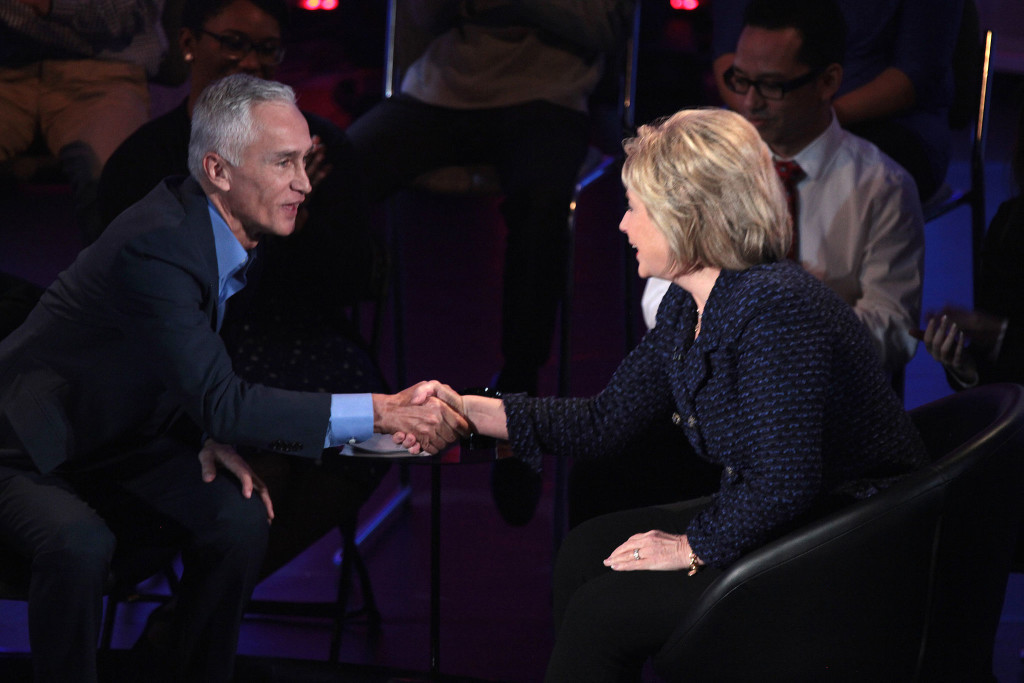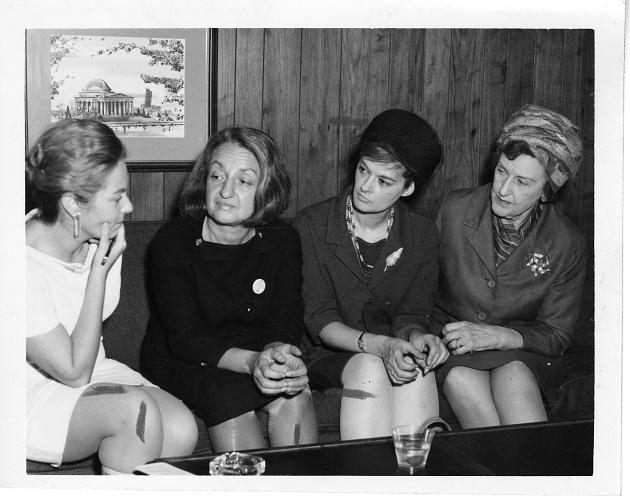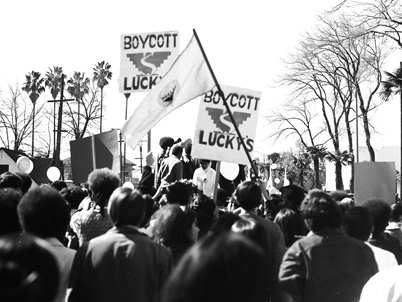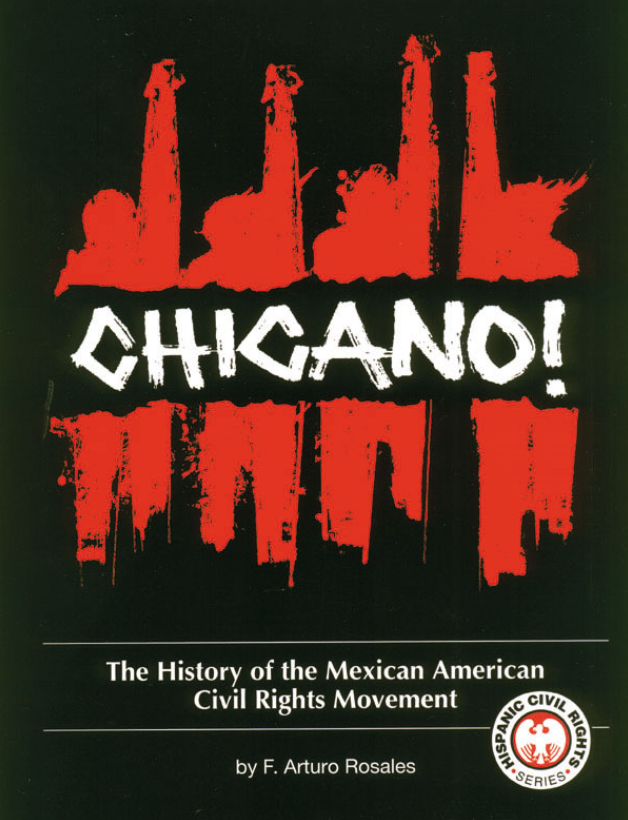Generation gaps and ideological divides: what Hillary and Bernie could learn from Chicana/o history

*”There is not one presidential candidate that can solve it all.” Aaron Sanchez explains why Hillary Clinton and Bernie Sanders have each fallen short in their campaigns – Clinton to attract young voters, Sanders to attract voters of color. It’s because they come from a place and time when needs and ideologies were more easily defined, and especially because of who defined them. White liberalism no longer sells across the board, as the candidates remember. What do you think the eventual nominee needs to do to bridge the gaps? VL
![]() By Arron Sanchez, Commentary & Cuentos (6 minute read)
By Arron Sanchez, Commentary & Cuentos (6 minute read)
Hillary Clinton and Bernie Sanders are having real problems reaching out to groups that they will need to win election. Clinton is losing young voters, including young women. Sanders has not managed to appeal to many minority voters (although after sharp and intelligent criticisms, Ta-Nehisi Coates and Hector Luis Alamo will vote for Sanders and he significantly reduced Clinton’s lead with Latinos in the Nevada caucus). They have struggled to explain their lack of support among these populations, but it’s relatively easy.
[pullquote]The student groups of ‘60s and ‘70s were overwhelmingly white and middle-class.[/pullquote]Their political identities and primary lenses for viewing the world were forged in the midst of mid-20th century modernist certainty.
That is, their key identities—class for Sanders, gender for Clinton—were formed during a moment in history when these constructs were seen in monolithic, whole, and certain terms. For socialists, and other leftists, class trumped race and all other identities were bourgeois mystification, fabrications made up by a capitalist elite to divide the working-class. Gender too was similar. Women were one in a global sisterhood of solidarity against male-based exploitation. In the students groups of the long decade of the ‘60s that proved formative for Sanders and Clinton, gender and class were primary, unquestionable truths—truths that would speak to power and bring it down.
But, the student groups of ‘60s and ‘70s were overwhelmingly white and middle-class. The universals that these explanatory monoliths were based in were flawed. People of color, and especially women of color, found the rigidity of the groups’ explanatory models limiting. There were already cracks in the facades of solidarity forming in the ‘60s and ‘70s. Clinton and Sanders have carried these limitations with them into their politics of a very different century with a very different economy.
[pullquote]Sanders’ socialism is a product of the new left not the old left.[/pullquote]Sanders is more New Deal than Socialist
While Sanders is a self-described “democratic socialist,” his policy solutions are closer to American New Deal liberalism than Scandinavian socialism. For socialists, the most pressing conflict that needed to be addressed was the growing division between the working-class and the rich, or the proletariat and the bourgeoisie. The working-class was poor because they had nothing but their labor to sell on the free market and they lacked the tools that made their labor valuable—what Marx called the means of production. The elite owned the tools that made labor valuable but did none of the work themselves. Yet, they amassed all the profit, all the value of the working-class’ labor while paying them pitiful wages. This was an unfair economic system that robbed from the productive class to enrich a parasitic one. It was an immoral system because it reduced proud, independent workers to subhuman beggars. The solution to this exploitative capitalist system was class solidarity, universal resistance by the proletariat against the bourgeoisie. While Marx saw an inevitable revolution, others saw the possibility to reform the economic system instead.
Through government intervention, the working-class would enact measures to limit the accumulation of wealth, profit, and capital among a small group of people. Through democratically elected representatives, government would ensure that working people would benefit from their fruits of their labor, that profits would be shared in the form of social programs. [tweet_dis]These are the most important hold-overs of Sanders’ watered-down socialism: his emphasis on class and belief in government to ameliorate the excesses of unchecked capitalism.[/tweet_dis]
But [tweet_dis]Sanders’ socialism is a product of the new left not the old left.[/tweet_dis] The radicalism of the new left modified Marxist alienation with a healthy dose of Salingerian disaffection. They were not organizing on the factory floor. They were not organizing the working-class against the factory manager. Instead, the new left was organizing on college campuses. They were organizing middle-class white college students against university administrators. They complained of capitalist materialism but did not always combat capitalist exploitation. Much of their protests and critiques were made possible by their various forms of privilege: middle-class, male, white, and American. They did not want to bring down these privileges, so much as build upon them, and extend them.
Clinton has not based her campaign strategy on a gender-specific identity, but she has used it to emphasize that she has a place as an “outsider.”
More recently, Clinton’s surrogates Gloria Steinem and Madeline Albright have illustrated the generation divide between older and younger women. Clinton and her generation had specific ideas of the meaning of feminism. Men were not necessarily the enemy, but the system of patriarchal privilege was the greatest obstacle to their empowerment. Women had to join together to fight the sexist and systematic subordination of women in society. Men holding power was a problem. Men held economic control over women’s labor in the home. Men held physical control over women’s bodies in the form of rape and violence. Men held social control over women’s lives and identities in the form of marriage. Women displacing men and gaining those positions of power was the solution. Women needed to support women in that effort. They could not trust anybody else. In theory, all women were equally oppressed and all women were equal. In reality, all women were not equal and not all women experienced exclusion at the same levels. Chicana and Black feminists quickly pointed out the multiple forms of oppression they encountered.
As people of color started their own organizations and joined other student organizations in the ‘60s and ‘70s, they repeatedly ran into the privileged based certainties of class and gender. Many working-class Chicanas, Chicanos, and African-Americans had actually worked in the fields and factories, or their parents had. They also saw in their daily lives the ways that class and race intersected. While race may have been a historical social construction, it was still a daily fact in their lives. They could not ignore it. They could not simply reason it away as bourgeois mystification.
Chicana/os didn’t exctly fit
Chicanos criticized university-bred Marxists who rushed into working-class communities, assured they had all the answers. Armando Cadava, a Raza Unida Party activist, complained about college students who “got their political awareness in a roundabout way, by reading, by discussing political activism in an academic setting….There’s no identification with activities on grass-roots level.” Chicano activist and poet, Tino Villanueva, highlighted the intersection of race and poverty in his poem “Que Hay Otra Voz,” writing:
there is another voice that wants to speak/ there is another profile that has bronze skin / on knees/ dragging themselves on the ground in the / Cotton-field of El Campo and Lubbock, Texas / […] There are certain uncertain certainties; / the bitterness of picking oranges / the tearfulness of picking onion […] / There is another voice that wants to speak.
Women could not ignore the intersection of gender, race, and class. The white college women who seemed to believe they spoke for all women did not speak for them or to them. During the planning for International Women’s Year, Chicana activist Diana Camacho wrote that “white liberal women” considered themselves “new world saviors.” “Confident they speak for and represent us, they feel Chicanas never represent them” Camacho continued. In a 1976 essay titled “Chicana Feminism,” Chicana activist Ana NietoGomez explained overlapping identities she embodied:
When you say you’re Chicana, you mean you come from a particular community, one which is subject to racism and the exploitation of centuries. When you say you are feminist you mean you’re a woman who opposes the oppression of not only the group in general, but of women in particular. In fact the statement is not contradictory at all, it is a very unified statement: I support my community and I do not ignore the women in my community (who have been long forgotten).
The radical politics of people of color challenged the certainties of the identities and institutions that had defined American life for the better part of century. Their critiques that began in the late days of the Civil Rights Movement only continued through the ‘80s and ‘90s into the early 21st century. The ideas survived the Reagan revolution and the conservative backlash. While their ideas might not have remade the world, they certainly remade the way people saw the world around them.
[pullquote]There is not one presidential candidate that can solve it all.[/pullquote]The mid-century world of Clinton and Sanders was an age of certainty.
[tweet_dis]Today’s young people were born into a very different world than the over middle-aged Democratic candidates.[/tweet_dis] Theirs is a postmodern, neoliberal pastiche. Their politics are a contradictory mix of new left and neoliberal. Their identities are not singular but intersectional. After decades, singular identities that supersede others no longer make sense to explain the multiple types of oppression and exploitation that affect them. Young women certainly recognize the structural power of sexism, but young black women also understand the multiple forces of structural exclusion when sexism is combined with racism. Young, gay, non-gender conforming youth understand the dangers of living in a world where sexism, racism, and heteronormativity fuse.This is why Clinton’s surrogates, Steinem and Albright, misspoke recently. This is why Sanders’ message that focused solely on class and the idea that all lives matter, was a dissonant one to Black Lives Matter protestors. Capitalism, sexism, racism, heteropatriarchy are all intersecting. There is not one answer. There is not one policy solution. There is not one presidential candidate that can solve it all.
This article was originally published in Commentary & Cuentos.
Aaron E. Sanchez is the editor of Commentary and Cuentos, a blog focused on issues of race, politics, and popular culture from a Latino perspective. The posts place these issues in historical, cultural, and intellectual context to better understand our present. Aaron received his Ph.D. in history from Southern Methodist University. He is a happy husband, proud father, and an avid runner.
[Photos via Wikimedia]Suggested reading




